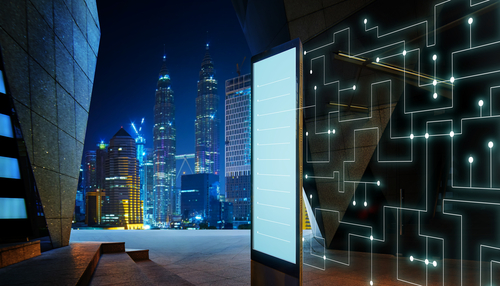Ensuring Maximum Impact with Digital Signage Marketing
By Alex Mardikian
The advantages of digital signage are apparent, but how does a business ensure that these benefits translate into a reality when they implement DOOH?
Digital signage adoption is on the upswing. Businesses are studying the benefits of going the digital way for marketing and communicating with an audience. The digital signage market is expected to achieve a CAGR of 7.4% and touch sales of $32.8 billion by 2023. The growth is being fueled by the advantages offered by DOOH and the advent of new technologies like high-resolution displays, thin screens, sturdy hardware, and overall energy efficient technology, which is leading to greater engagement with the audience and better data capture.
But there’s more to running a successful digital advertising campaign than just putting a few screens outside at a chosen location and then hoping that people will interact with the display. A business invests money in outdoor advertising, and it is in your interest that you carefully chart out an action plan to follow for getting the best ROI with DOOH.
The first step is to know what to expect from the campaign. The expectations must be realistic keeping in mind factors such as technology used, demographic targeted, and competition. Have clarity on what you wish to achieve. Do not put in money purely because you haven’t tried this form of marketing. Break down objectives to granular levels. A mall may want to use signage to direct traffic to its anchor stores. A theater may want to use signage to announce discounts and display schedules. A restaurant may choose to use display signage to improve service.
You need to give thought to the site where the displays will be placed. Is the space owned by you or will you lease it? How exposed to the elements will the display be? Will you have to lay cables or install mounts for the screens? Can the technology being used be scaled for future use? What are the chances of the technology growing obsolete before you have achieved objectives and achieved a good return on investment?
The advertiser must have an idea of the kind of user experience that the audience expects. Everything about deploying digital signage stems from this understanding. Keep the audience at the center of your plans. Consider working with a network provider that offers the entire range of service including developing a plan from scratch, obtaining equipment and testing it, implementing the installations to meet deadline, and providing technical support. If the installer also provides analytics support then that is a big plus. Prepare a list of the hardware components, software, displays, connectors, and control systems that you need to assemble to get the display running. Compare vendors for cost and the overall assembled digital signage for functions and future scalability.
Before the actual deployment, a pilot run is carried out to test the assembly. You may have to test more than one version of the design to try and arrive at one that is most suitable for a real-world deployment. Test conditions should be as varied as possible. Test a small setup in a controlled environment, also test outside. Test network conditions. The system should be able to handle stresses that arise from weather conditions, power blackouts, power excesses, etc. This is the opportunity to make changes. Also, you need to have a plan in place to measure results based on clear objectives. You can measure leads and sales. Measuring product recall may be a two-step process requiring you to touch base with the customer after a period of time.
After the concept has been ironed out in theory and modifications made based on tests, it is time to execute the rollout. This is best done in a phased manner because there are always variables that may not have been factored. A rollout across multiple locations must be done gradually. Supervision of the installation, storage of components before assembly, and clear apportioning of responsibilities are some of the things that need to be thought out.
A maintenance schedule must be in place. Any outage, specially an extended one, hurts the campaign and the brand. In cases where the signage is required for customers to make a purchase decision, an outage can hurt sales. Repairs must happen quickly. Can remote technicians guide the person on spot via troubleshooting instructions or must a technician be dispatched to the location. Software updates must happen smoothly and in a timely manner. Without consistent vendor support, a business may find it difficult to ensure smooth, long-term running of a digital signage campaign.

